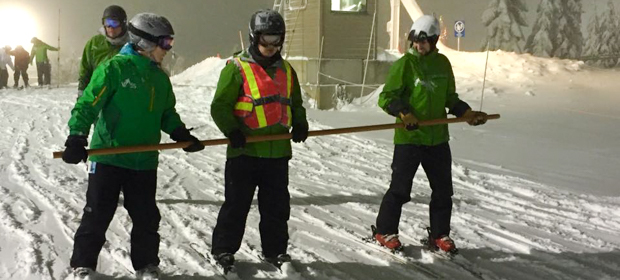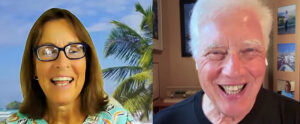I believe that when we stretch ourselves in one part of our lives, that stretch shows up in other parts of our lives. That is why I encourage leaders to do things that expand and hone their edges, whether it is in work, life, or play.
In Keeping My Edge, I share how challenging myself on really difficult ski runs in the mountains keeps my performance edge in many other areas of my life. A few years ago I started volunteering for Vancouver Adaptive Snow Sports (VASS). This helped me find new edges for myself.
As a volunteer, I was required to take a lot of training in both ski instructing and in the four modules of the Canadian Association of Disabled Skiers training program. While my initial impression of disabled skiing was for those with physical disabilities, such as a missing limb, I have learned that VASS instructs students with autism, cognitive challenges (e.g., someone who has had a stroke), visual impairment, and indeed those with physical disabilities from missing limbs to paraplegics and quadriplegics.
Stretch #1—there is a lot more to disabled skiing than I ever knew.
At VASS, we always instruct in teams of two or more. Our student my first season was a 27-year old autistic young man who is completely blind who has skied for ten years, including five with VASS.
Stretch #2—a single student may have multiple disabilities.
I interviewed our student’s caregiver, showed up for all training and orientation, and was still anxious heading up to Grouse Mountain for our first night of instructing our student.
Stretch #3—even with all the training and preparation I still had to deal with my own anxieties.
Once I met my fellow instructors and our student, we headed up the mountain. Imagine being completely blind, having to 100% rely on someone else for your safety, and then try and get on a 100-person ski gondola? We helped our student navigate around hundreds of people, got him safely on the gondola, walked him up a long hill to the rental hut, and got him into his ski gear.
Stretch #4—guiding our student onto the gondola, the long walk up the hill, and helping him into his ski boots and skis.
We started the night on the beginner run. We decided to use a 12-foot pole, designed specifically for instructing visually impaired skiers. Two of us ski while holding either end of the pole with our student between us.
Stretch #5—I had not received training on the 12-foot pole, so I had to learn as we went.
We gingerly headed down the run having success on our very first try. We worked on our student’s technical skills, focusing on weight shift in turns, with the result that on our subsequent runs we went twice as fast.
Stretch #6—remembering to actually instruct, after first making sure our student was safe and having fun.
The anxiety was gone. I was focused on working as a team and helping our student. As the evening progressed, I realized what a blast we were all having.
Stretch #7—there are many ways to have fun skiing—not just challenging myself on difficult runs.
Anne Bethune, President of VASS, calls what we do VASS Magic. She’s right—there is magic in being able to help someone with severe disabilities get out and enjoy the mountains, hills, and experience of riding a pair of skis down a mountain.
Stretch #8—it is a gift to be able to volunteer for VASS.
Stretch #9—the bonus is that the skills I’ve learned in VASS help me in many other areas of my life. I have more patience. I assume less. I focus on having fun first.




